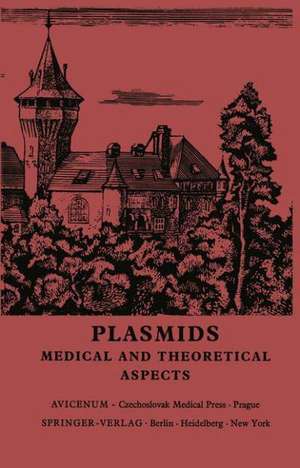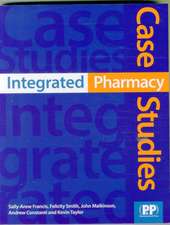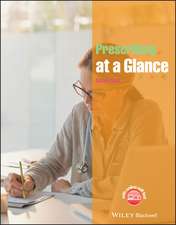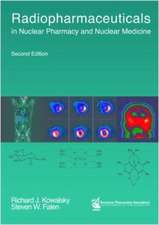Plasmids: Medical and Theoretical Aspects Third International Symposium on Antibiotic Resistance Castle of Smolenice, Czechoslovakia, 1976
Editat de S. Mitsuhashi, L. Rosival, V. Krcmeryen Limba Engleză Paperback – 4 ian 2012
Preț: 689.30 lei
Preț vechi: 725.58 lei
-5% Nou
Puncte Express: 1034
Preț estimativ în valută:
131.90€ • 141.04$ • 109.97£
131.90€ • 141.04$ • 109.97£
Carte tipărită la comandă
Livrare economică 14-19 aprilie
Preluare comenzi: 021 569.72.76
Specificații
ISBN-13: 9783642810664
ISBN-10: 3642810667
Pagini: 504
Ilustrații: XII, 491 p. 42 illus.
Dimensiuni: 156 x 244 x 26 mm
Greutate: 0 kg
Ediția:Softcover reprint of the original 1st ed. 1977
Editura: Springer Berlin, Heidelberg
Colecția Springer
Locul publicării:Berlin, Heidelberg, Germany
ISBN-10: 3642810667
Pagini: 504
Ilustrații: XII, 491 p. 42 illus.
Dimensiuni: 156 x 244 x 26 mm
Greutate: 0 kg
Ediția:Softcover reprint of the original 1st ed. 1977
Editura: Springer Berlin, Heidelberg
Colecția Springer
Locul publicării:Berlin, Heidelberg, Germany
Public țintă
ResearchDescriere
In recent period we have experienced a further rapid and explosive development of scientific knowledge concerning bacterial resistance to antibiotics. The International Con gress of Chemotherapy in London in 1975 dealed with bacterial resistance in many ses sions and lectures. We are aware of the fact that also the World Health Organisation in Brussels in 1975 discussed the problem as an integral part of long-term programme in environmental pollution control. A special significance should be ascribed to the discussions concerning the safety of DNA research which ran in several countries as well as on meetings of scientifics involved in the research of recombinant DNA molecules. This problem was also discussed in the meeting of Advisory Committee of World Health Organisation in 1975. On the programme of this Symposium in Smolenice, there are environmental conse quences of plasmids, medical aspects of their pools and circulation and their genetics and molecular biology.
Cuprins
Introductory Lectures.- Biological Significance of Drug Resistance Plasmids.- Antibiotic Policy-an All-Nation Computer-assisted Model.- Geographic Differences in Antibiotic Susceptibility Patterns: Staphylococci.- I. Environmental Consequences of Plasmids.- Resistant E.coli of Farm Origin and their possible Danger to Man. (Opening Lecture).- R Plasmids in fish Pathogens.- R Plasmids which Reduce Nitrofuran Sensitivity of Their Host Bacteria; their Role in the Selection of R-Plasmids-Carrying Bacteria.- Drug Resistance in Staphylococcus aureus Strains Isolated from Raw Milk.- Frequency and Some Properties of Methicillin-Resistant Strains of Staphylococcus aureus Isolated from Clinical Sources.- Survey of Drug Resistance in Staphylococcus aureus.- Colonization of the Intestine in New-born Children by R-Plasmid-Carrying Coliforms.- II. Genetics of Plasmids.- Plasmid-Chromosome Interactions in Pseudomonas aeruginosa (Opening Lecture).- Intrinsic Resistance to Aminoglycosides in Pseudomonas aeruginosa.- Drug-Resistance Plasmids in Pseudomonas aeruginosa.- Plasmid-Determined Resistance to Erythromycin and Lincomycin in Streptococcus pyogenes.- Genetic Characterization of Transferable Plasmids Presumed to be Unloaded.- A Physical Analysis of Mating in Escherichia coli.- Studies with ? Transducing Phages Bearing Antibiotic Resistance Genes from the Plasmid R100.- ? Tra Transducing Phages.- Physical Mapping and Molecular Relationship of the R Factors RP1, RP4 and RP8.- Transposition of the Ampicillin Resistance Gene from the RP4 Factor to the Bacteriophage P1 and to the Escherichia coli Fertility Factor.- Identification and Characterization of a New Resistance Transfer Factor Isolated from Escherichia coli.- Transfer of Gentamicin-Tobramycin Resistance and of Hemolytic Toxin Production from Lysogenic, Hospital Strains of Pseudomonas aeruginosa in Mixed Cultures and by Transduction.- Plasmid-Chromosome Interaction in Hfr Strains.- Control of the Replication of an R Plasmid Rtsl.- Hybrid R Plasmids between Temperature-Sensitive Rtsl and a Transfer-Deficient Derivative of NR1: Integrative Suppression of the Temperature-Sensitive Replication of Rtsl.- Plasmids in Streptomycetes.- Genetical and Biochemical Aspects of Replication of the Bacteriocinogenic Plasmid Clo DF 13.- In vivo and in vitro Synthesized Gene Products of the Bacteriocinogenic Plasmid Clo DF 13.- The Action of Colicins in other Cells than Rod-Shaped Enteric Bacteria.- III. Molecular Biology of Plasmids.- A) Replication of DNA.- Dissociation and Replication of Segments of a Composite R Plasmid in Proteus mirabilis and Escherichia coli.- Replication of R Plasmid DNA in Proteus mirabilis.- A Technique for the Analysis of Non-Replicating and Replicating Forms of R6K Plasmid DNA in Escherichia coli: Relationship to the Folded Chromosome.- Various Types of Mutant R Plasmids that Specify Hypersynthesis of ? -Lactamase.- Recombination Sequences and the Amplification of the Tetracycline-Resistance Determinant in Plasmid pM?l of Streptococcus faecalis.- Generation of Small Ampicillin-Resistant Plasmids (Rsc) and their Mode of Replication.- Relaxation Complexes Affecting Plasmids in Staphylococcus aureus Encoding Streptomycin and Chloramphenicol Resistance.- In vitro Translation of R-factor DNA.- B) Mechanism of Resistance to Antibiotics.- Oxacillin-Hydrolyzing Penicillinase of Aeromonas hydrophyla.- Anion Effect on Oxacillin-Hydrolyzing Penicillinase of an R Plasmid.- Adenosine 3?, 5?-Cyclic Monophosphate-Dependent and Independent Production of Chloramphenicol Acetyltransferase in Escherichia coli Carrying R plasmids.- ?-Lactamase-Directed Barrier of Escherichia coli Carrying R Plasmids for Penicillins and Cephalosporins.- Phenotypic Expression of Methicillin Resistance in Staphylococcus aureus.- Resistance of Haemophilus to Aminoglycoside Antibiotics.- Mechanism of R-Mediated Streptomycin Resistance in Pseudomonas aeruginosa.- IV. Plasmid Engineering.- Biohazard Assessment of Recombinant DNA Molecule Research.- Is the Current System of Scientific Communication Adequate to the Age of Plasmid Engineering ?.- Transformation of Pseudomonas putida with Antibiotic-Resistance and Degradative Plasmid DNA.- Plasmid-coded Degradation of Toluene and Xylenes in Soil Pseudomonas.- In vitro Rearrangement and Deletion of Plasmid DNA Sequences: the Isolation and Partial Characterization of a Novel F-Controlled Plasmid Cloning Vehicle.- Properties and Regulation of DNA Replication Origins and Associated Functions in Multi-Origin Replicons.- V. Medical Aspects of Plasmids.- Medical Aspects of Antibiotic Resistance.- R Plasmids in Providencia and Proteus rettgeri Strains from Frankfurt University Hospital.- A Phage Typing of Pseudomonas aeruginosa.- Studies on R Factors in Salmonella typhi Strains.- Bacteriophage Restriction by R Factors in E. coli of Human and Animal Origin.- Appearance of Drug Resistant Variants of Staphylococci in the Process of their Genetic Exchange in Natural Conditions.- Plasmid Spread through Escherichia coli Populations.- Characterization of an R Factor to Fosfomycin.








